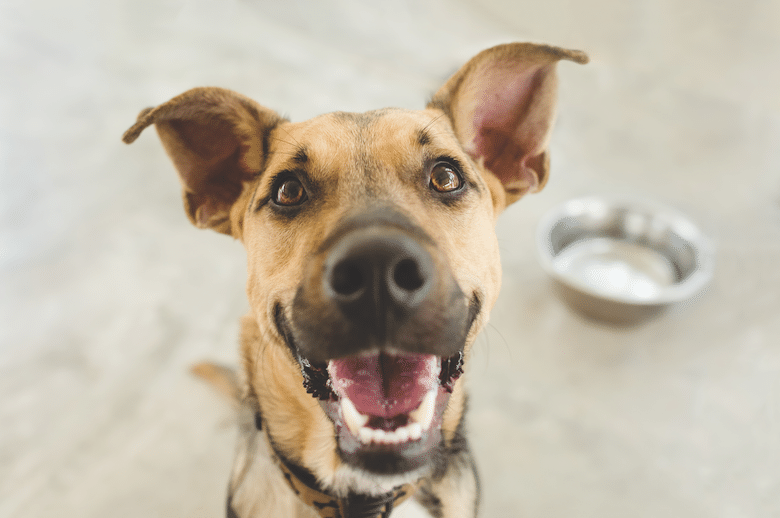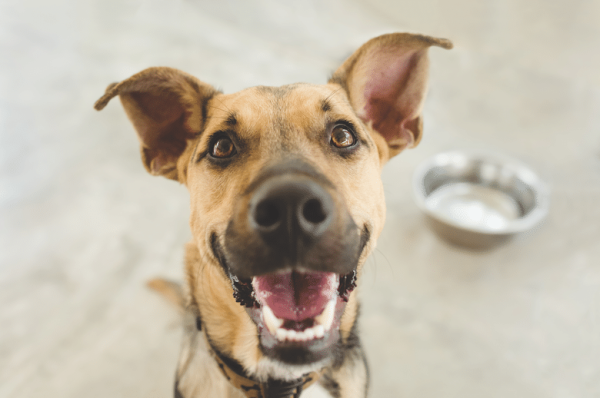What’s your dog worth to you? Forget trying to come up with a dollar amount. What your dog does every day to make you smile, feel good, and be motivated to play is doggone priceless, right?
Our dogs especially stepped up their game for us as we shelter in place and practice social distancing during the COVID-19 pandemic. So, now is the ideal time to return the favor by investing in your four-legged ally by picking the right foods and treats. Just keep in mind that what a pup needs nutritionally is far different than for a dog in his prime or one sporting a gray muzzle.
Dogster reached out to top pet-care experts for some feeding tips. Some of their responses just may surprise you.
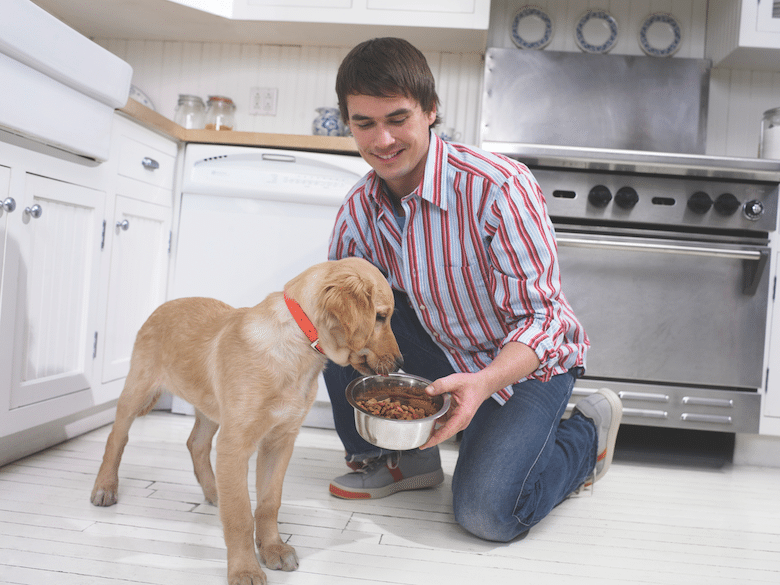
Tasty perks for puppies
Introduce probiotics early on: “Probiotics are a really good addition when bringing home a puppy,” says Dr. Judy Morgan, a pet-food cookbook author, who operates a holistic pet health care practice in Woodstown, New Jersey. “Excitement, fear, diet changes, water changes, and travel can all contribute to digestive upset and loose stools. Probiotics can help the transition.”
Size and breed do matter: “Giant breed puppies have different dietary requirements than teacup-sized puppies,” says Dr. Kathryn Primm, owner of Applebrook Animal Hospital in Ooltewah, Tennessee. “Please consult your veterinarian, who can make the best dietary recommendations for your puppy that are based on genetics and lifestyle.”
Related: Schedules and Guides for Feeding Puppies
Dr. Jean Hofve, a holistic veterinarian and author from Jamestown, Colorado, advises feeding your fast-growing pup three to four measured meals a day to keep his digestive system operating at its optimal best. “A puppy’s stomach can’t hold enough food to provide optimal nutrition in one or two big meals, so divide the food amount into three or four mini-meals a day.”
Expand your pup’s protein palate: Do not limit your pup to one type of protein, such as beef or chicken, during his first year. “I recommend you rotate different proteins to avoid your puppy from developing a sensitivity to one protein,” says Dr. Elisa Katz, owner of Holistic Veterinary Center in Downers Grove, Illinois. “So, if you like one particular pet food brand, consider rotating through its various flavors, such as beef, chicken, and fish.”
Rapid fire those healthy treats: “To start a puppy off right with positive reinforcement training, you need a lot of repetition of treats in small bites,” says Maureen Patin, certified professional dog trainer and co-owner of What A Great Dog training center based in Frisco and Richardson, Texas. “You need to keep a puppy mentally stimulated, so try stuffing a Kong toy or a Toppl treat toy with moist food and freezing it. The pup has to work to get to that food, and the cold is soothing to the gums. Making the meal last 20 minutes or so is far more satisfying to a puppy than just quickly devouring food from a bowl every meal.”
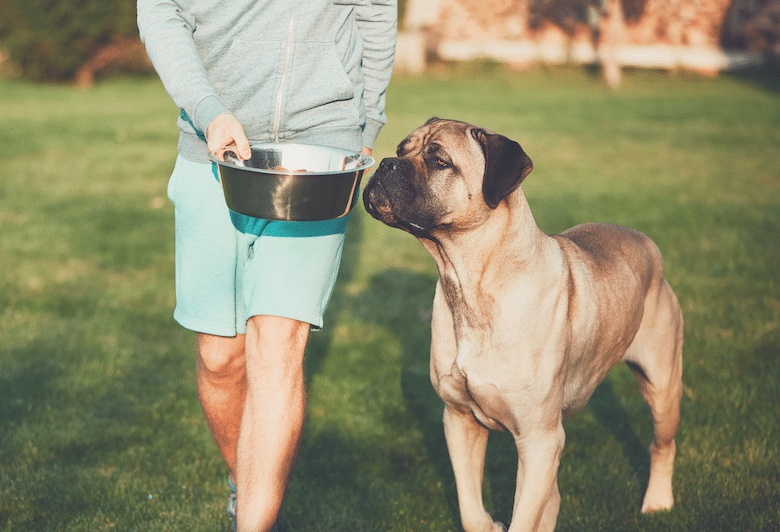
Awesome feeding tips for adult dogs
Go organic on a budget: Organic chicken liver is a healthy “topper” for your adult dog and won’t be as pricey as organic steak. “Adding organic meats is a plus and so are vegetables, such as green beans,” Dr. Hofve says. “But be sure to give green beans to your dog steamed or puréed — not raw — to get the real nutritional value out of them.”
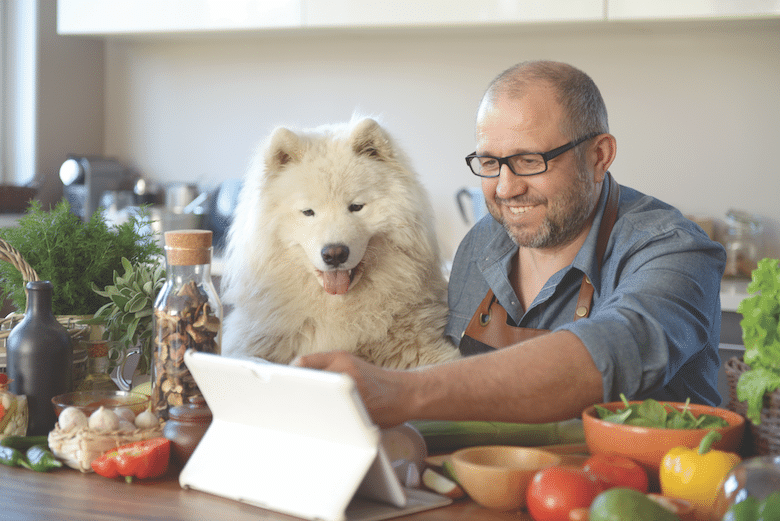
Don’t forget fresh foods: “Even if you are feeding a kibble-type food, adding about 30 percent of the calories as fresh foods will greatly improve overall nutritional quality, health and longevity,” Dr. Morgan says.
Her fresh faves? Cooked eggs, sardines, steamed kale, blueberries and steamed or sautéed shiitake mushrooms.
Related: What Vegetables Can Dogs Eat?
Keep schooling your dog: Mealtime is of key importance to your dog. Use that time to reinforce obedience cues and maybe learn a new trick. “Dogs are like us and can succumb to ‘boredom eating,’” Dr. Primm says. “I offer my dog her measured portion calculated to what her needs are. Any other treats she gets, she works for, or at least has to find in a puzzle toy or hidden somewhere to stretch her mind.”
Choose bowls wisely: Select stainless-steel bowls for your dog’s food and water needs. “Stainless-steel bowls contain no dyes or paints and can be sterilized easily in the dishwasher,” Dr. Katz says. “I have found that stainless-steel bowls are also not likely to cause any skin irritations that some plastic or ceramic pet bowls can cause.”
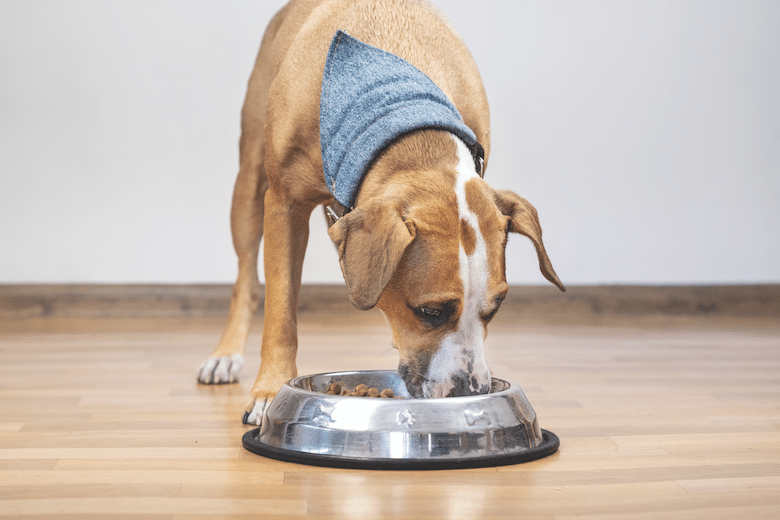
Sensational ideas for feeding senior dogs
Know the ins and outs of your dog: “A healthy weight for senior dogs is a formula of ‘in’ versus ‘out,’” Dr. Primm says. “Obesity is especially hard on our older dogs. Their joints are already experiencing age-associated wear, so if your dog is not burning calories because it is raining a lot, consider reducing his portion.”
Bring on the broth: Make friends with your local butcher and slow-cook an organic bone in water. “Bone broth is magical for older dogs,” says Dr. Karen Becker, an integrative wellness veterinarian and co-founder of the Companion Animal Nutrition and Wellness Institute. “Bone broth is fantastic for older dogs who need extra fluids and may be finicky eaters or have sensitive tummies. Just make sure the broth does not contain salt or onions.” If your dog has a health issue like chronic stomach issues or pancreatitis, discuss bone broth with your veterinarian first.
Cue it up for quinoa: Denise Fleck, president of the Grey Muzzle Organization, who also shares her Atlanta, Georgia, home with a senior dog named Haiku is a big fan of including steamed quinoa in your dog’s bowl. “Quinoa contains all eight essential amino acids, so it is nearly a perfect food,” she adds.
Give your dog an O for Omega: “Senior dogs need supplements that provide joint support and brain support,” Dr. Morgan says. “Omega-3 fatty acids are great for both.”
Good omega-3 sources: fresh-cooked salmon, krill, cod, or canned sardines. Or, you can add a high-quality fish oil supplement. Dr. Morgan’s selection tips: “The supplement should have no odor, be liquid instead of capsule form, and not stored in plastic bottles. Store the fish oil in a cool place.”
Featured photo: David Baileys | Getty Images
Read Next Should You Try Holistic Dog Food?

